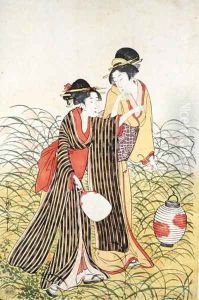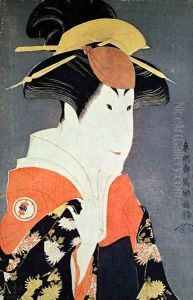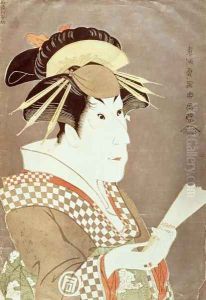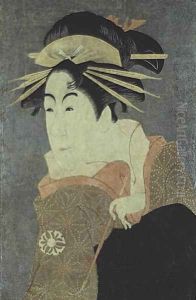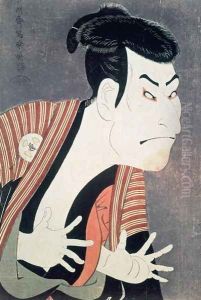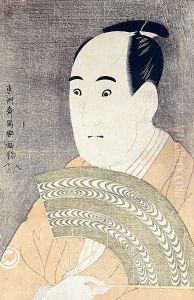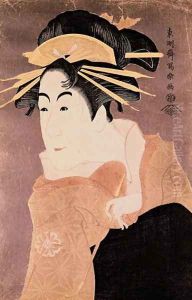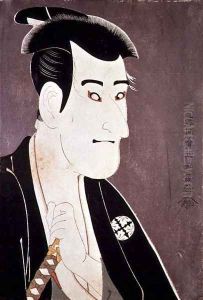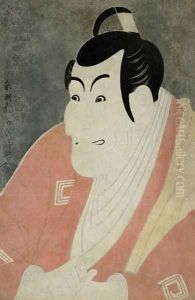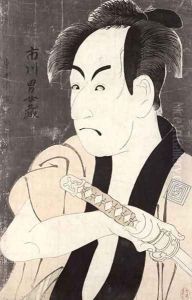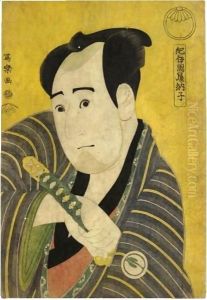Toshusai Sharaku Paintings
Toshusai Sharaku is a somewhat enigmatic figure in Japanese art, known primarily for his ukiyo-e woodblock prints. Unlike other artists of his time, Sharaku focused almost exclusively on the world of kabuki theatre, capturing the actors in dramatic, often exaggerated expressions that conveyed the emotional intensity of their roles. His active period as a printmaker was remarkably brief, spanning only about ten months between 1794 and 1795, during which he produced some 140 known prints.
Sharaku's work was characterized by its bold lines, vivid colors, and a unique approach to portrayal that set him apart from contemporaries. His prints often highlighted the actors' individual features in a manner that was unusually realistic for the genre, which traditionally favored more idealized representations. This realism was not always well-received by his contemporaries, and it's believed that his career was cut short due to the critical reception his works received.
Despite the brevity of his career, Sharaku's impact on ukiyo-e and Japanese art has been long-lasting. His portraits of kabuki actors are among the most celebrated works of the period, praised for their psychological depth and technical mastery. After his disappearance from the art scene, Sharaku's work was largely forgotten until the 19th century, when his prints were rediscovered and gained a new appreciation among European artists and collectors, contributing to the Japonisme movement that influenced the likes of Vincent van Gogh and Edgar Degas.
The true identity of Toshusai Sharaku remains a mystery, with various theories suggesting he may have been a disgruntled actor, a kabuki enthusiast, or even another well-known artist working under a pseudonym. This mystery only adds to the intrigue surrounding his work, which continues to be studied and admired for its distinctive style and emotive power.
